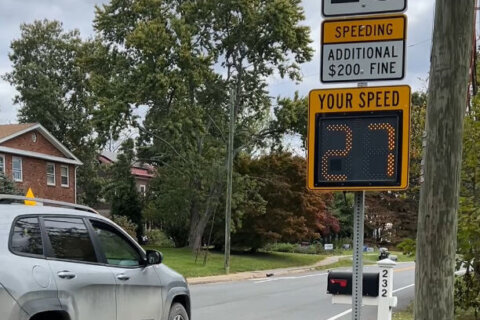This article was republished with permission from WTOP’s news partners at Maryland Matters. Sign up for Maryland Matters’ free email subscription today.
Gov. Wes Moore signed an executive order Tuesday directing state agencies to use “plain language” that provides clear and brief information on any documents or websites from state government aimed at the average reader in Maryland.
Moore signed the four-page order – with eight whereas clauses and nine subsections – to make government websites and services easier to read and access in recognition of the 34th anniversary of the Americans with Disabilities Act later this week.
“This executive order will help ensure that every piece of writing that comes out of this administration, in print and online, is simple, accessible … and easy to read,” Moore said Tuesday at the State House ceremony where he signed the order.
While the executive order took effect immediately after Moore signed the document, it will likely take months to apply plain language across state agencies.
Maryland Information Technology Secretary Katie Olson Savage said her office expects to have an implementation plan by the end of the year, which will provide a clearer timeline on the transition for agencies and state services to convert to plain language.
“There are hundreds of Maryland websites that provide information, services and benefits for 6 million residents. And unfortunately, the current digital experience provides varying levels of accessibility, and use language that can be confusing and filled with jargon, regardless of ability,” Savage said at the event.
But Moore said the plain language initiative will help all Marylanders navigate state government, not just those with disabilities.
“It is based on a simple idea … that it should not be so difficult for Marylanders to access the programs and services that they deserve,” the governor said.
It’s not a new idea. The ADA was signed July 26, 1990, and there have been U.S. efforts to use plain language in governments since the 1970s.
Maryland Disabilities Secretary Carol Beatty noted that recent data from the Centers for Disease Control and Prevention showed that more than 70 million Americans identified as having a disability as of 2022.
“It’s often said that disability is the only minority group that anyone can join at any moment, be it by birth, illness, by accident or aging. Disability issues are everyone’s issue,” she said.
Beatty reflected on the progress made in the 34 years since the ADA was signed, but said there is still room for improvement.
“It is critical that we look back and take stock of all that we have accomplished in those last 34 years, but we also must push forward to make sure we continue to provide access for all,” Beatty said.







